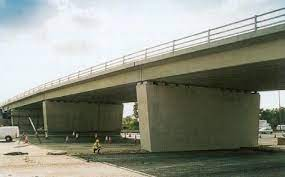Stagflation is an economic phenomenon characterized by a combination of stagnant economic growth, high unemployment rates, and high inflation. This unique situation presents challenges across various sectors, including real estate. In this article, we will explore what happens to real estate during stagflation. Also, we’ll discuss the impact of stagflation on the real estate market, strategies for real estate investors, opportunities for buyers, challenges for homeowners, and the role of government policies. Let’s dive in!
Understanding Stagflation
Stagflation is a rare and challenging economic condition where a stagnant or slow-growing economy coincides with high levels of inflation. This creates unique circumstances that can significantly impact the real estate sector. During stagflation, traditional economic measures and strategies may not apply, and investors, buyers, and homeowners need to adapt accordingly.
Impact of Stagflation on Real Estate
Decreased Demand for Real Estate
One of the primary effects of stagflation on the real estate market is a decrease in demand. As the economy stagnates and consumer purchasing power diminishes due to inflation, people become cautious about making significant financial commitments such as buying property. The demand for both residential and commercial real estate tends to decline during these periods.
Rising Interest Rates
During stagflation, central banks often raise interest rates to combat inflation. This has a direct impact on the real estate market, as higher interest rates make borrowing more expensive. Homebuyers and real estate investors may face increased costs for mortgages and loans, reducing their affordability and potential returns on investment.
Reduced Investment in Real Estate
Stagflation can also discourage investment in real estate. Investors may opt for alternative assets or more liquid investments during uncertain economic times. The combination of slow economic growth and inflationary pressures can create an unfavorable environment for real estate investments, causing investors to seek safer options.
Declining Property Values
As demand decreases and economic growth stagnates, property values can experience downward pressure. Sellers may find it challenging to achieve desired prices, leading to extended listing periods and increased competition. Homeowners may face the risk of negative equity, where the outstanding mortgage exceeds the value of the property.
Strategies for Real Estate Investors during Stagflation
While stagflation poses challenges, real estate investors can employ strategies to navigate the uncertain waters and potentially capitalize on the situation.
Diversification
Diversification is key during stagflation. Spreading investments across different property types, locations and asset classes can help mitigate risks associated with stagflation. By diversifying their real estate portfolio, investors can balance potential losses in one area with gains in another, thus safeguarding their overall investment.
Focus on Cash Flow Properties
During stagflation, it becomes crucial for real estate investors to prioritize cash flow properties. These are properties that generate consistent rental income that can offset the effects of inflation. Investing in rental properties in stable locations with high demand can provide a steady stream of income and act as a hedge against inflationary pressures.
Long-Term Perspective
Stagflation is typically a temporary economic condition. Real estate investors with a long-term perspective can weather the storm by holding onto their properties and waiting for the economy to rebound. Over time, as the economy recovers and inflation subsides, real estate values may appreciate, providing investors with potential gains in the future.
Opportunities for Real Estate Buyers during Stagflation
While stagflation presents challenges, it also brings opportunities for real estate buyers who are well-prepared and proactive.
Negotiating Lower Prices
During periods of stagflation, buyers can leverage the decreased demand and negotiate lower prices with sellers. Motivated sellers may be more willing to accept lower offers in order to sell their properties. Conduct thorough market research, analyze comparable sales, and be prepared to negotiate effectively to secure a favorable deal.
Exploring Distressed Properties
Stagflation can lead to an increase in distressed properties, such as foreclosures or short sales. These properties are often sold at discounted prices, presenting an opportunity for buyers to acquire real estate below market value. However, it’s essential to conduct due diligence and assess any potential risks associated with distressed properties.
Investing in Non-Traditional Real Estate
During stagflation, unconventional forms of real estate may offer attractive investment opportunities. These could include alternative property types like storage units, mobile home parks, or even land suitable for future development. Exploring non-traditional real estate avenues can diversify your portfolio and potentially provide higher returns during stagflation.
Challenges for Homeowners during Stagflation
Stagflation can pose significant challenges for homeowners, requiring them to adapt and navigate through the economic uncertainties.
Difficulty in Selling Properties
With decreased demand and lower purchasing power among buyers, homeowners may experience difficulty in selling their properties. It’s important to set realistic expectations regarding selling prices and be prepared for extended listing periods. Working with experienced real estate agents who understand the local market dynamics can be helpful in positioning your property effectively.
Mortgage Affordability Issues
During stagflation, rising interest rates can impact mortgage affordability for homeowners. As the cost of borrowing increases, monthly mortgage payments may become more burdensome. It’s crucial for homeowners to carefully review their financial situation, budget accordingly, and consider refinancing options if viable.
Negative Equity
In a scenario where property values decline, homeowners may face the risk of negative equity. Negative equity occurs when the outstanding mortgage balance exceeds the current market value of the property. This can limit homeowners’ options, making it challenging to sell or refinance their homes. Consulting with a financial advisor or housing counselor can provide guidance on managing negative equity situations.
Government Policies and Stagflation’s Impact on Real Estate
Government policies play a significant role in mitigating the effects of stagflation on the real estate sector.
Monetary Policies
Central banks often employ monetary policies, such as adjusting interest rates, to control inflation during stagflation. These policies can directly impact borrowing costs for real estate transactions. It’s essential for investors and homeowners to stay informed about changes in monetary policies and their potential implications on the real estate market.
Fiscal Policies
Governments may implement fiscal policies to stimulate economic growth and combat stagflation. These policies can include tax incentives, infrastructure investments, or subsidies to specific industries. Such measures can indirectly influence the real estate market by boosting overall economic activity and increasing consumer confidence.
Housing Market Regulations
During periods of stagflation, governments may introduce or modify housing market regulations to address affordability concerns and stabilize the real estate sector. These regulations could include measures to control rent prices, enhance tenant protections, or promote affordable housing initiatives. It’s important for real estate participants to stay informed about any regulatory changes that may impact their investments or housing options.
Conclusion
Stagflation presents unique challenges and opportunities for the real estate market. Decreased demand, rising interest rates, and declining property values are some of the potential impacts on the industry during this economic phenomenon. However, with the right strategies, investors can navigate through stagflation and potentially find success in cash flow properties, diversification, and long-term investments.
Real estate buyers can take advantage of negotiable prices, explore distressed properties, and consider non-traditional investment opportunities. Homeowners, on the other hand, may face difficulties in selling properties, affordability issues with mortgages, and the risk of negative equity. However, understanding the market dynamics, working with professionals, and exploring options such as refinancing can help homeowners overcome these challenges.




